Also available in: Deutsch
Paris is one of the most popular destinations in the world for a city trip. Only London and Bangkok attract more visitors annually. The sights of Paris are numerous, and large parts of the Seine riverbanks are part of the UNESCO World Heritage.
Paris Sights – 20 Amazing Things You Can Do on a City Trip
- How to get to Paris
- Accommodation in Paris – Our Hotel Tip
- 1. Arc de Triomphe
- 2. Champs-Élysées
- 3. Place de la Concorde
- 4. Jardin des Tuileries
- 5. Louvre
- 6. Pont Neuf
- 7. Paris Plage
- 8. Notre Dame
- 9. Pantheon
- 10. Jardin du Luxembourg
- 11. Boat Trip on the Seine
- 12. Musée d’Orsay
- 13. Eiffel Tower
- 14. Jardins du Trocadéro
- 15. Statue of Liberty
- 16. Pont de Bir-Hakeim
- 17. Sacré-Coeur
- 18. Moulin Rouge
- 19. Galeries Lafayette
- 20. Opéra Garnier
- Paris: Tours and Tickets
Everyone knows the Eiffel Tower and the Louvre among the sights in Paris, but there is so much more to discover in the French capital. Historical buildings, beautiful gardens, breathtaking views, small and lovely cafes – Paris offers something for every visitor.
To give you a brief overview for your city trip, we have compiled 20 of the top attractions in Paris in this article. They can be excellently explored in 3 days or over a weekend, and many are even within walking distance. Have fun with our Paris sights and top things to do!
How to get to Paris
The fastest option to reach Paris is by plane. From many cities in Germany, Austria, or Switzerland, various flights depart daily to the French capital. You might even find budget flights for under 100 € with luck. Times, prices, and tickets can be found on Skyscanner.
Information: There are many options to get from the airport to the city. If you’re traveling with a group of people, a private driver or a shared transfer in a minivan is worth considering, as train rides can also be quite expensive.
Furthermore, you have the option to travel by train or long-distance bus (e.g., Flixbus) from many destinations in the surrounding countries. The duration in this case is naturally much longer, and prices can also vary significantly. More information, as well as tickets and prices, can be found at Omio.
Accommodation in Paris – Our Hotel Tip
To explore Montmartre and the rest of Paris, the district is a great starting point. Even though Paris can be expensive, there are good and affordable hotels in Montmartre, and yet you’re right in the middle of the action. We chose the ibis Hotel Paris Montmartre for our stay and can recommend it. The rooms are not overly large, but they offer everything you need. A comfortable bed, air conditioning, a television, and a bathroom.
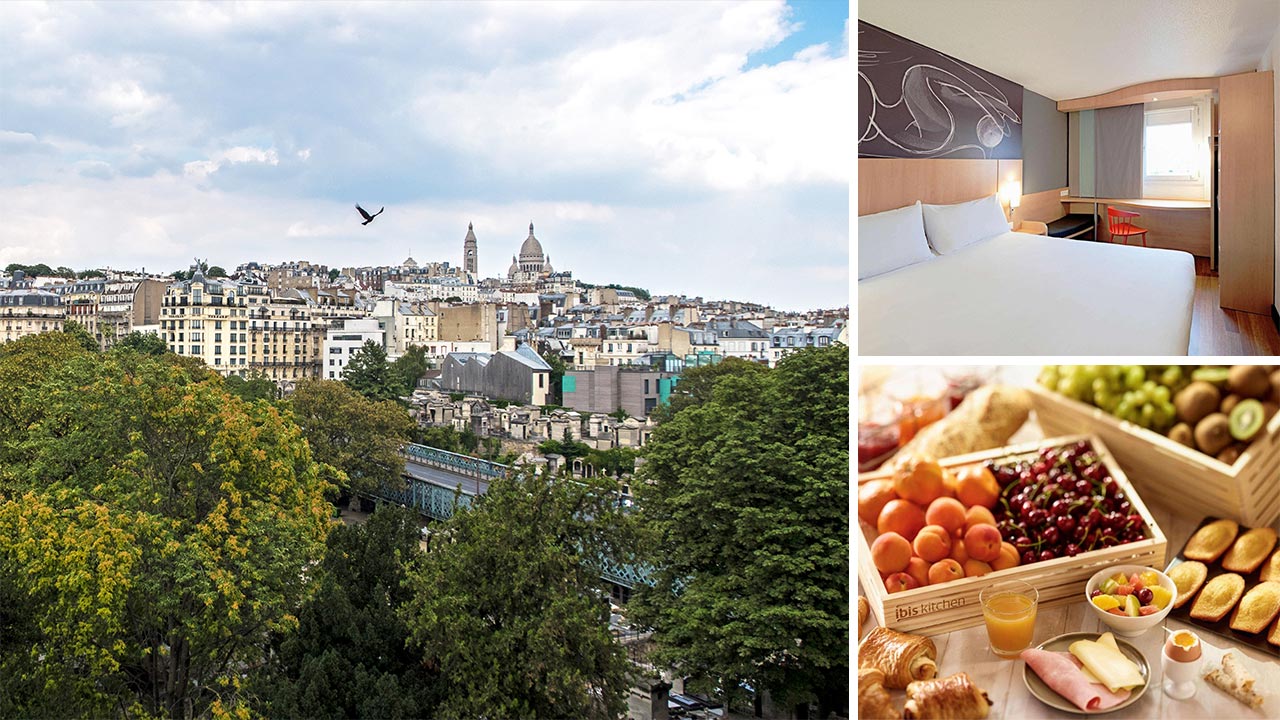
Tip: When booking, make sure your room faces the cemetery (write this in the respective booking page’s additional requests). This way, you’ll also get a great view over Montmartre.
You can explore the artists’ quarter on foot, and there are also metro and bus stations nearby for easy access to the rest of Paris. More hotels in Paris, of course, in other neighborhoods as well, can be found here.
1. Arc de Triomphe
The Arc de Triomphe, known in French as Arc de Triomphe de l’Étoile, is one of the most famous sights in Paris. It is located on Place Charles-de-Gaulle at the end or beginning of the Champs-Élysées. The star-shaped square is surrounded by 12 streets that all converge there, forming a roundabout around the Arc de Triomphe.

You can reach the Arc de Triomphe through an underpass, as the busy road is not suitable for crossing. You can climb the nearly 50-meter-high triumphal arch via 284 steps and enjoy a magnificent view from there. Admission is €12, and it is open from 10.00 AM to 10.30 PM. You can buy tickets online in advance if you don’t want to wait in line.
2. Champs-Élysées
The Avenue des Champs-Élysées starts directly at the Arc de Triomphe and takes you to the Place de la Concorde. The boulevard is just under two kilometers long and one of the shopping highlights of Paris. Numerous upscale boutiques of well-known brands line up here.
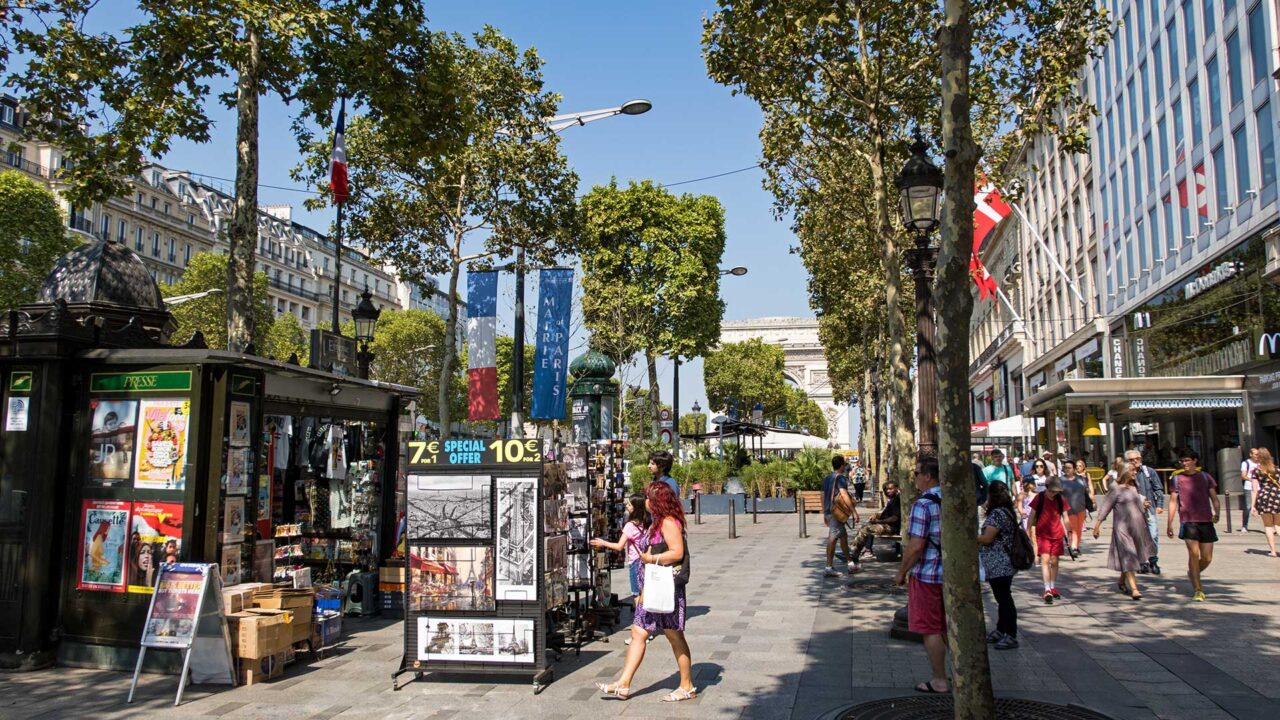
However, the Avenue des Champs-Élysées has a lot more to offer. From cinemas, theaters, restaurants to parks and some well-known landmarks, there is much to see and experience. The Avenue des Champs-Élysées is especially beautiful on the first Sunday of every month when it is car-free.
Furthermore, significant parades take place here (for example, on July 14th, France’s National Day), the Champs-Élysées Film Festival, or the New Year’s countdown at the Arc de Triomphe. Even if you’re not here for shopping, taking a stroll along the Champs-Élysées is worth it.
3. Place de la Concorde
Between 1755 and 1776, King Louis XV had the Place de la Concorde, the largest square in Paris, built (68,470 m²). It is situated between the gardens of the Louvre, also known as the Tuileries Garden, and the Champs-Élysées.

Surrounded by two fountains, the tall obelisk with its golden tip is the highlight of the Place de la Concorde. It stands 23 meters high and was given to France by Egypt as a token of gratitude for assistance with translating hieroglyphs.
By the way, there are also bronze enclosures in the ground around the obelisk. The obelisk itself acts as a pointer, which has made it the largest sundial in the world since 1999.
4. Jardin des Tuileries
Just as mentioned with Place de la Concorde, after the square, you’ll encounter the Jardin des Tuileries. It adjoins the Louvre Museum and is bordered to the south by the Seine River. This is one of the most visited parks in Paris, even though many visitors merely pass by on their way from the Champs-Élysées to the Louvre.
The French queen Catherine de’ Medici had it constructed in the 16th century, and over the centuries, it was often redesigned by successive monarchs. Since the French Revolution, the Jardin des Tuileries has been a public park.
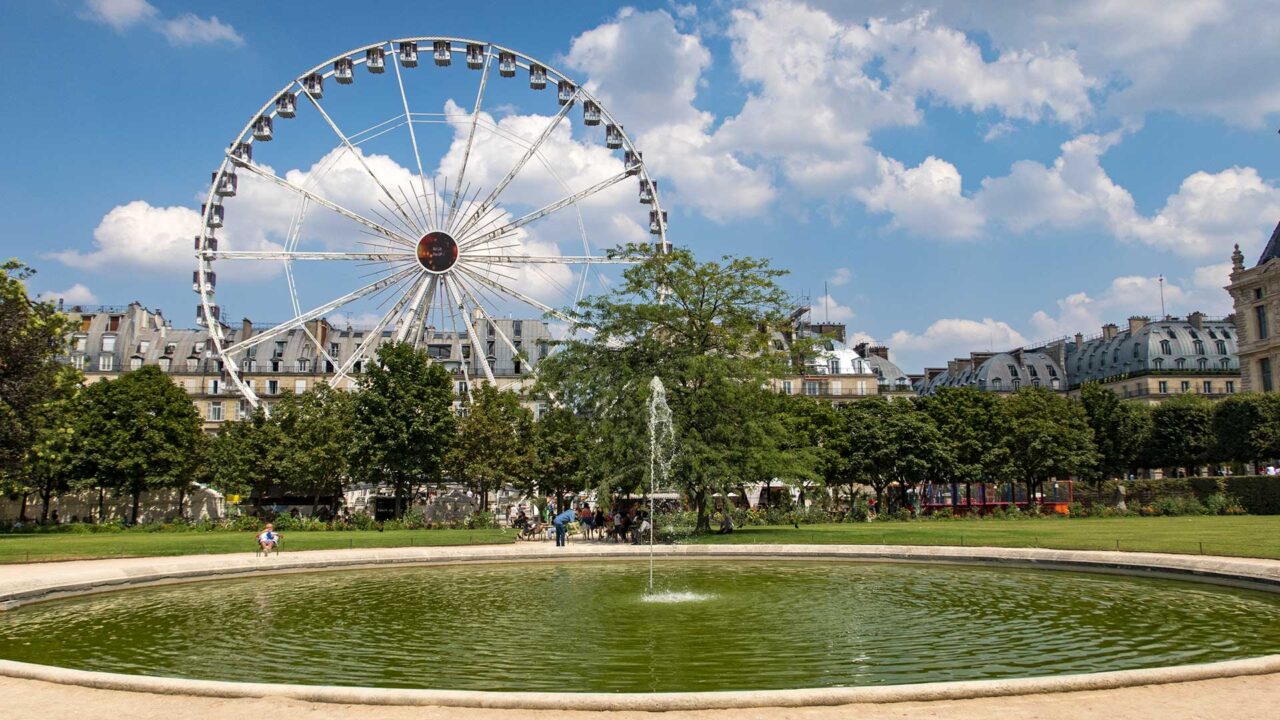
Within the park itself, there are numerous seating areas to relax in and partially beautiful views of the Place de la Concorde and the Arc de Triomphe, as the Louvre and Jardin des Tuileries together lie along the Axe Historique (historical axis) of Paris.
Tip: If you’re in Paris between late June and mid-August, you’ll also find the Fête des Tuileries taking place here. It’s a kind of summer fair with a large Ferris wheel, from which you can enjoy an impressive view of Paris.
5. Louvre
The Louvre in Paris is one of the most famous museums in the world, and thousands of visitors come there daily. Some admire the Palais du Louvre with its glass pyramids from the outside only, but many also venture inside. For instance, the famous painting of the Mona Lisa can be found there. Well, who doesn’t know her?
However, the crowd around this masterpiece is usually enormous. So, if you’re interested in other exhibitions at the Louvre as well, a visit is worthwhile. In our opinion, definitely not just for the (quite small) Mona Lisa.

Especially on weekends or during holidays, you should be prepared for long waiting times at the entrance of the Louvre. The regular admission fee is €15, but it’s definitely worth booking a skip-the-line ticket with a guided tour online in advance for an extra fee. On some days, you’ll be glad to have it.
Tip: If you want to visit the Louvre for free, you should go on the first Saturday of the month between 6.00 PM and 9.45 PM or on June 14th, the French National Day. On these days, the museum is freely accessible to every visitor.
6. Pont Neuf
Just a few minutes’ walk from the Louvre, you’ll find the Pont Neuf Bridge, built between 1578 and 1607. It’s the oldest bridge in Paris that’s still in its original state. The 238-meter-long Pont Neuf connects Paris with the inner island Île de la Cité, which is situated in the Seine River. By the way, this is also the oldest district of Paris.
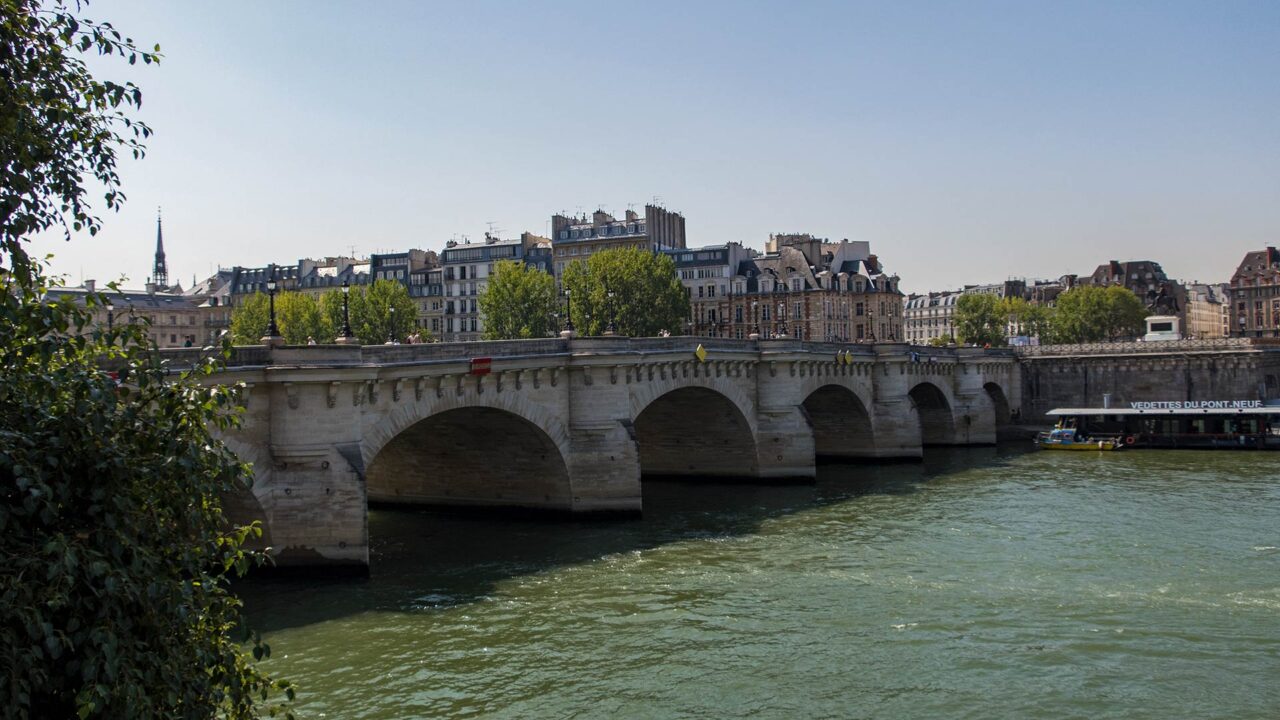
7. Paris Plage
From early July to early September, you’ll find the so-called Paris Plages along some of the banks of the Seine. Between the bridges Pont Neuf to Pont de Sully and Pont de Solferino to Pont Alexandre III, grassy areas, lounge chairs, umbrellas, and more are provided to create a certain beach feeling.
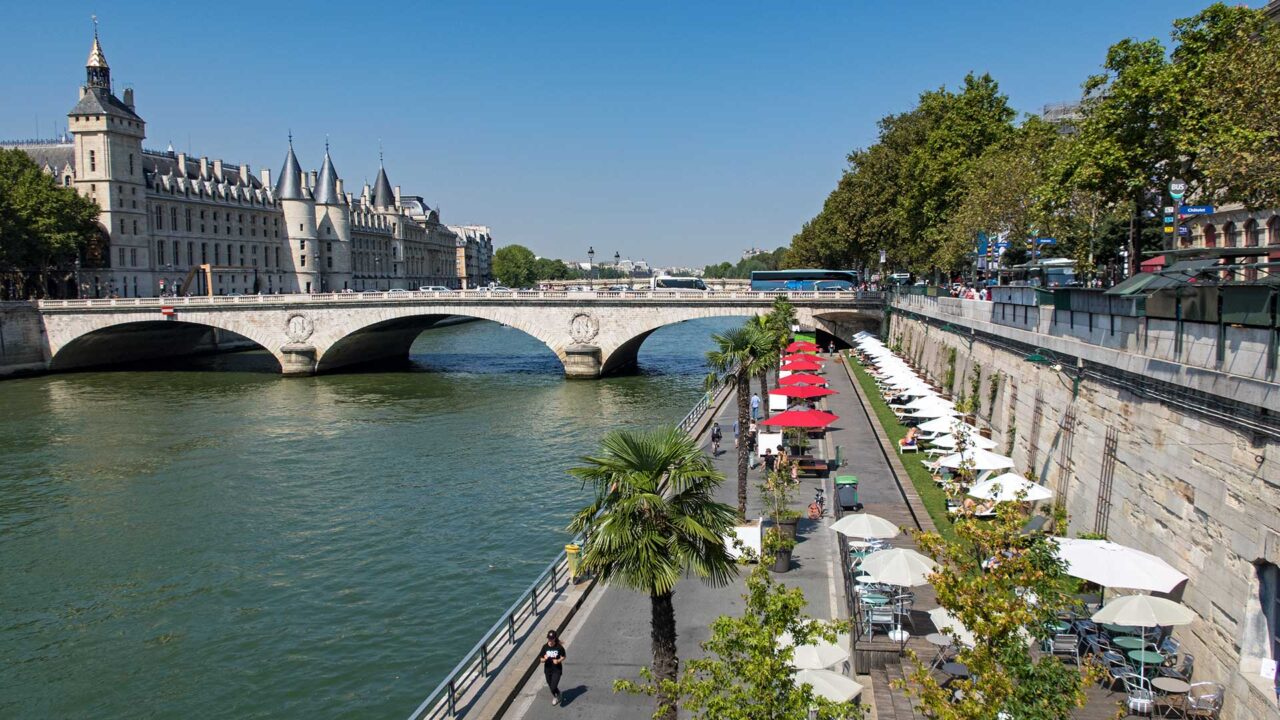
Even better, head over to the Bassin de la Villette. There, swimming pools are even offered to cool off during the summer heat. So, if you’re looking to experience something different or if you’d like to relax by the water with a book or a refreshing drink, be sure to visit the Paris Plages during the summer.
8. Notre Dame
The Cathedral of Notre Dame, opened in 1375 after nearly 200 years of construction, is still a highlight among the sights of Paris today. The church is dedicated to Mary, as reflected in its full name: Notre-Dame de Paris means Our Lady of Paris.
During the French Revolution, many parts of the cathedral were destroyed, and it was only renovated again during the rule of Napoleon, as Notre Dame became very famous due to the novel “The Hunchback of Notre-Dame.”
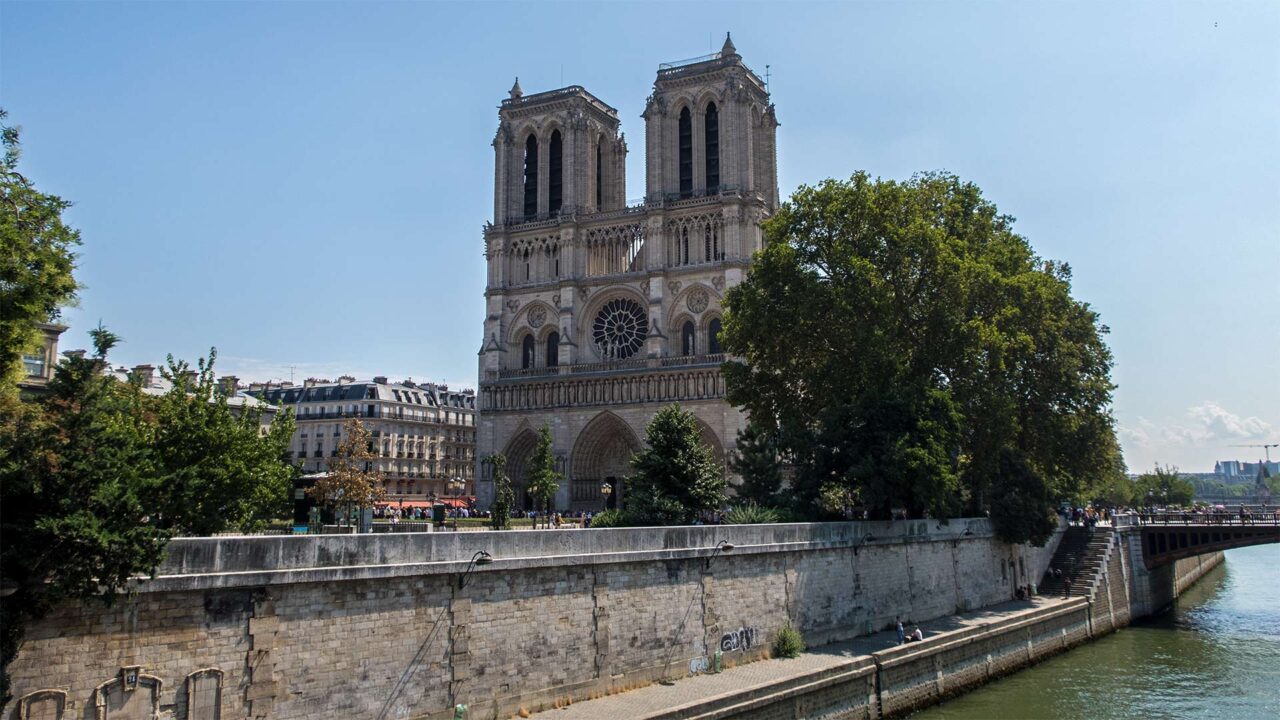
Notre Dame is open daily from 8.00 AM to 6.45 PM, with half an hour longer on weekends. Entry into the church itself is free, but if you wish to climb the towers, you’ll need a ticket. By the way, there are often huge queues in front of the church, so you should plan some extra time if you want to visit for free.
Update: On April 15, 2019, large parts of the roof structure of Notre Dame caught fire during renovation work. The cathedral is planned to be restored promptly, but is currently closed to visitors.
9. Pantheon
The Pantheon of Paris was completed in 1790 and was originally intended to serve as a church. However, due to the French Revolution, it was repurposed as a memorial. From a distance, you can easily recognize the Pantheon by its massive dome. Inside, the remains of many famous French personalities are interred, such as Marie Curie, Victor Hugo, Jean-Jacques Rousseau, and many others.
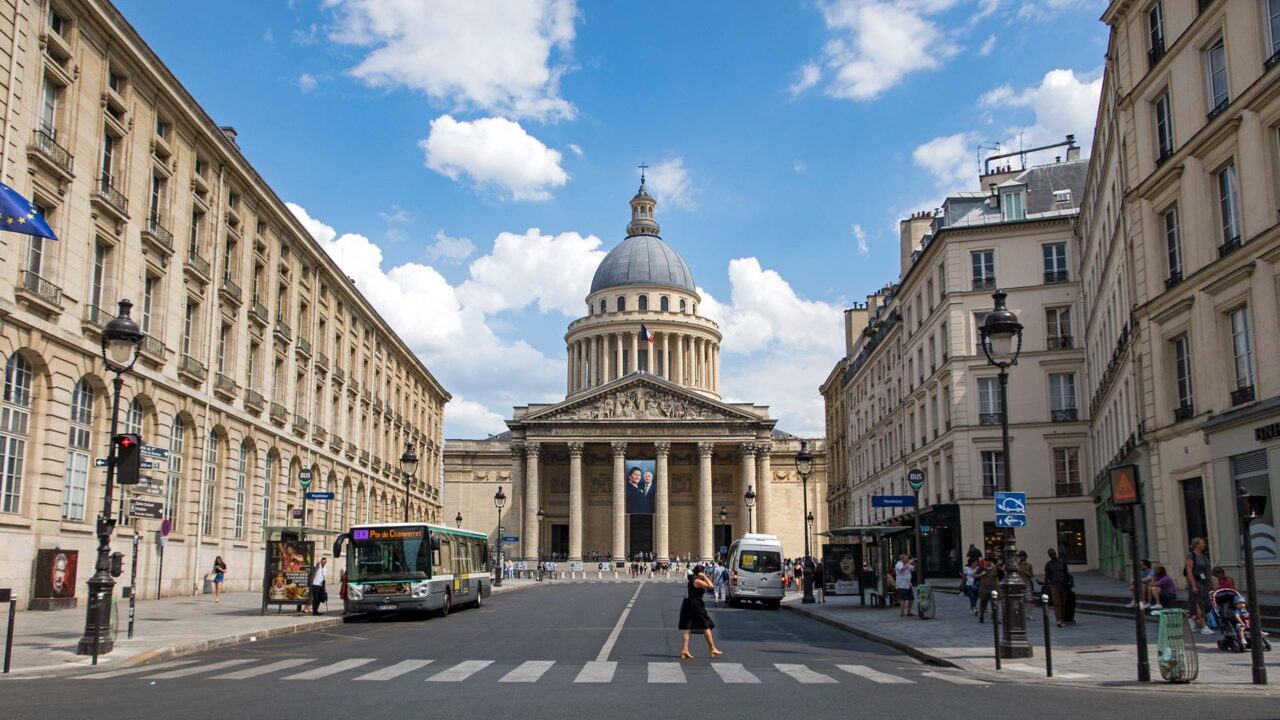
The national Hall of Fame, as the Pantheon is often referred to, can be visited for an entrance fee of €8.50. On the 1st Sunday of the month, between November 1st and March 31st, the visit is free. The splendid Gothic-style building attracts many visitors, and tickets with audio guides are in high demand to learn more about its history.
10. Jardin du Luxembourg
Not far from the Pantheon lies the 26-hectare Jardin du Luxembourg, a large palace garden. The extensive garden is part of the Palais du Luxembourg, where the French Senate is located. It’s especially popular among families and students living in the vicinity.
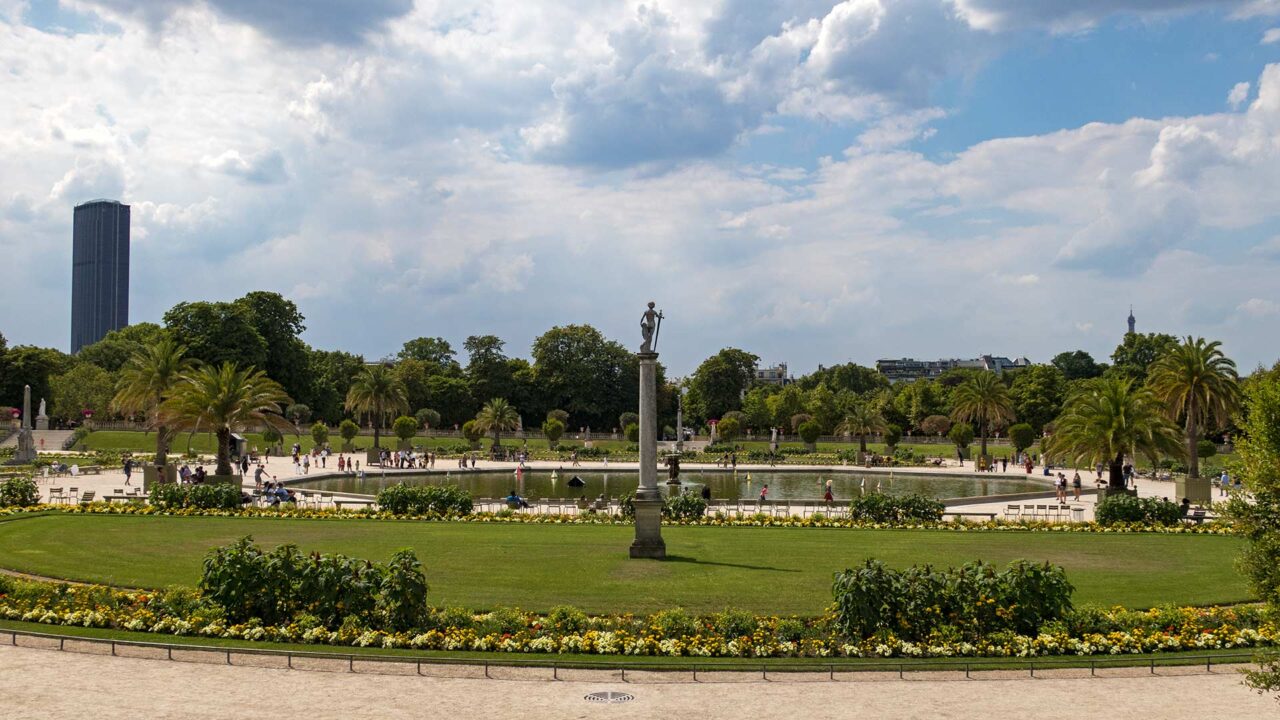
The Jardin du Luxembourg, created as early as 1612, is divided into two sections: a French and an English part. There are numerous statues scattered throughout the park, greenhouses, pavilions, carousels, chess fields, bridge areas, and much more. A great place to unwind from the hustle and bustle of the city.
11. Boat Trip on the Seine
A must on a trip to Paris is a boat ride on the beautiful Seine river. There are countless providers along the river where you can admire many of Paris’ sights. There’s a wide variety of programs available, ranging from one-hour tours to dinner cruises.
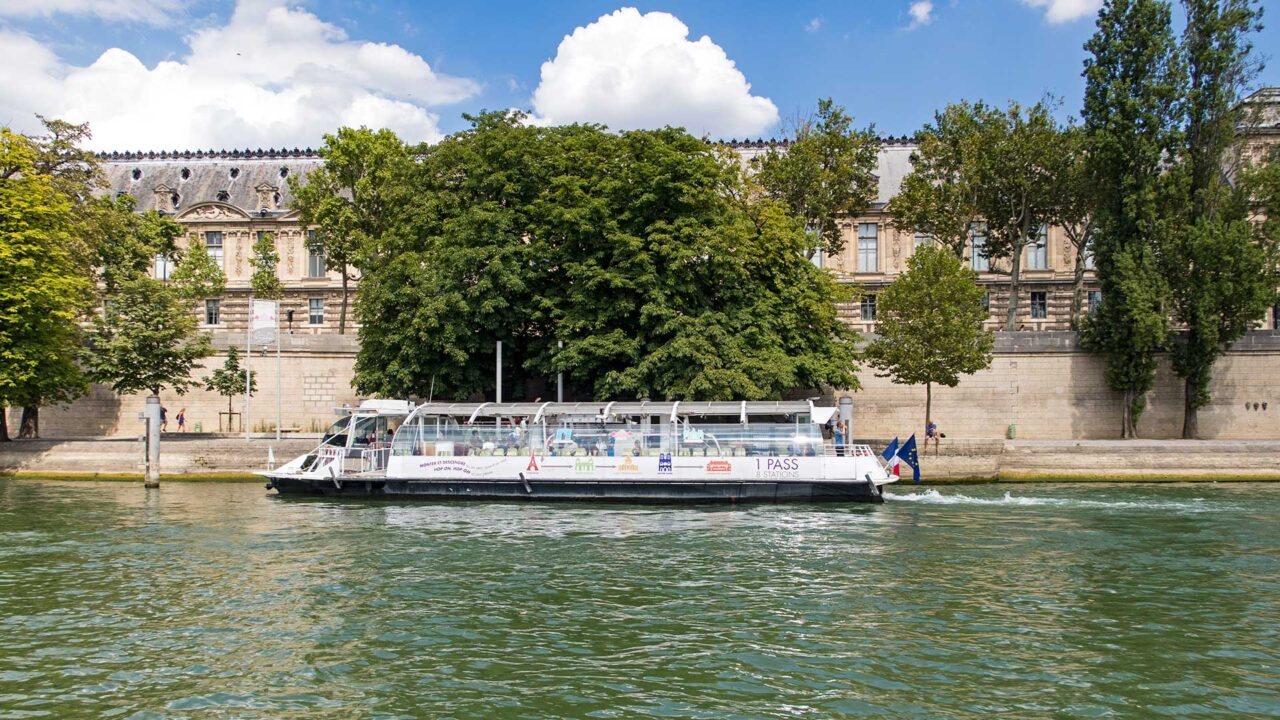
Rides on the Seine start with prices from €10, but they can cost a bit more depending on the program. Well-known providers include Bateaux Parisiens and Vedettes du Pont Neuf. You can find more options and tickets for Seine rides here.
12. Musée d’Orsay
On the opposite side of the Seine from the Jardin des Tuileries lies the Musée d’Orsay. The train station, built for the 1900 World Exposition, has been the home of the museum since 1986. The Musée d’Orsay, spanning 16,000 m², now houses over 4,000 exhibits, including paintings (e.g., by Van Gogh), sculptures, and other artworks.

Except for Mondays, it is open daily from 9.30 AM to 6.00 PM, and on Thursdays, it remains open until 9.45 PM. In addition to the exhibitions, the large clock on the 5th floor is particularly enticing to many visitors, as it offers a panoramic view of Paris. Admission prices start at €14, though you might have to anticipate longer waiting times. You can get a Skip-the-Line ticket online.
13. Eiffel Tower
This building can’t be missed, of course! The Eiffel Tower is the icon and the first sight of Paris that you probably associate with the French capital. The 324-meter-tall tower was erected for the World Exhibition in 1889. Until 1930, the Eiffel Tower was even the tallest building in the world.
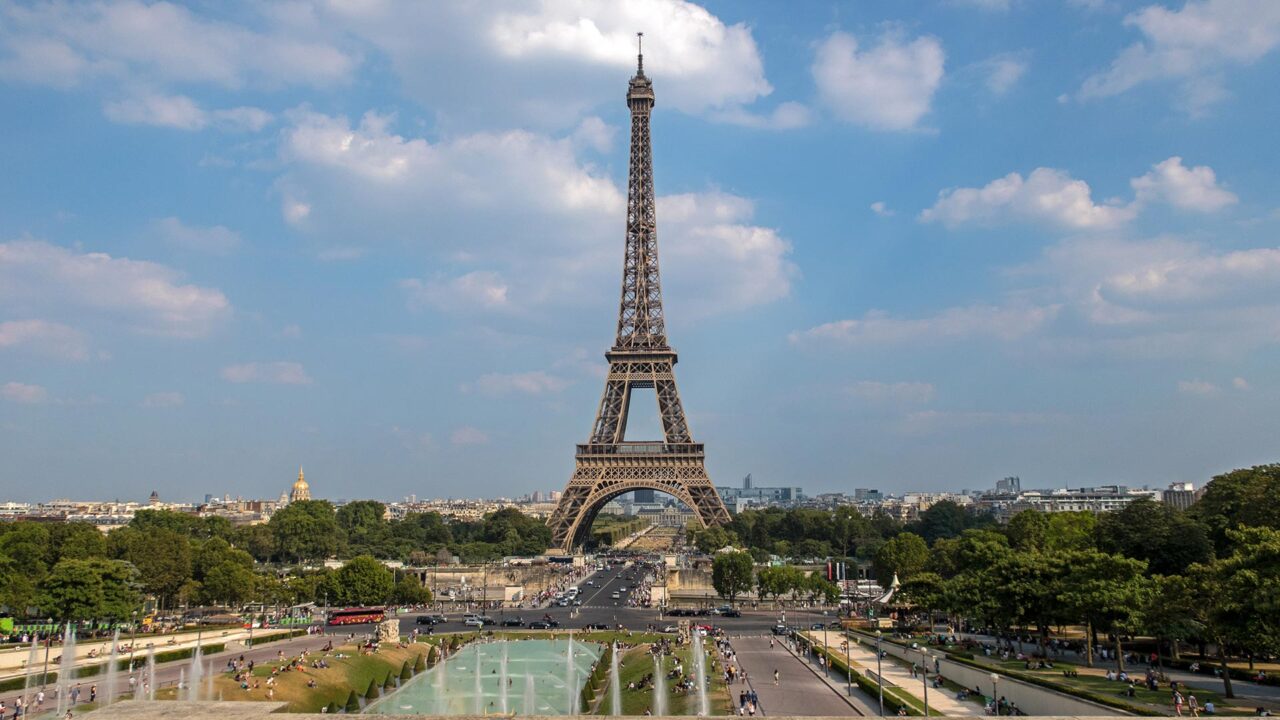
About 7 million visitors come to the Eiffel Tower annually, making it one of the most visited attractions in the world. You can access the Eiffel Tower at three different levels. The first two can be reached by stairs or elevator, but the summit is only accessible by elevator.
The first floor of the Eiffel Tower is located at a height of 57.6 meters, the second at 115.7 meters, and the third floor at the top at 276.1 meters. Since the area around the Eiffel Tower is secured and you will experience long waiting times without a ticket, it’s worth booking a ticket online in advance.

From the platforms, you’ll have breathtaking views of Paris, including the Sacré-Cœur, Notre Dame, and even La Défense, the modern district of Paris with skyscrapers. Additionally, you’ll find further exhibitions and restaurants on the different floors. A visit is definitely worth it.
14. Jardins du Trocadéro
Opposite the Eiffel Tower, on the other side of the Seine, you’ll find the Trocadéro Gardens. They spread across two hills, separated in the middle by the Fountain of Warsaw. From here, you have a splendid view of the Eiffel Tower, even in the evening when it’s illuminated.
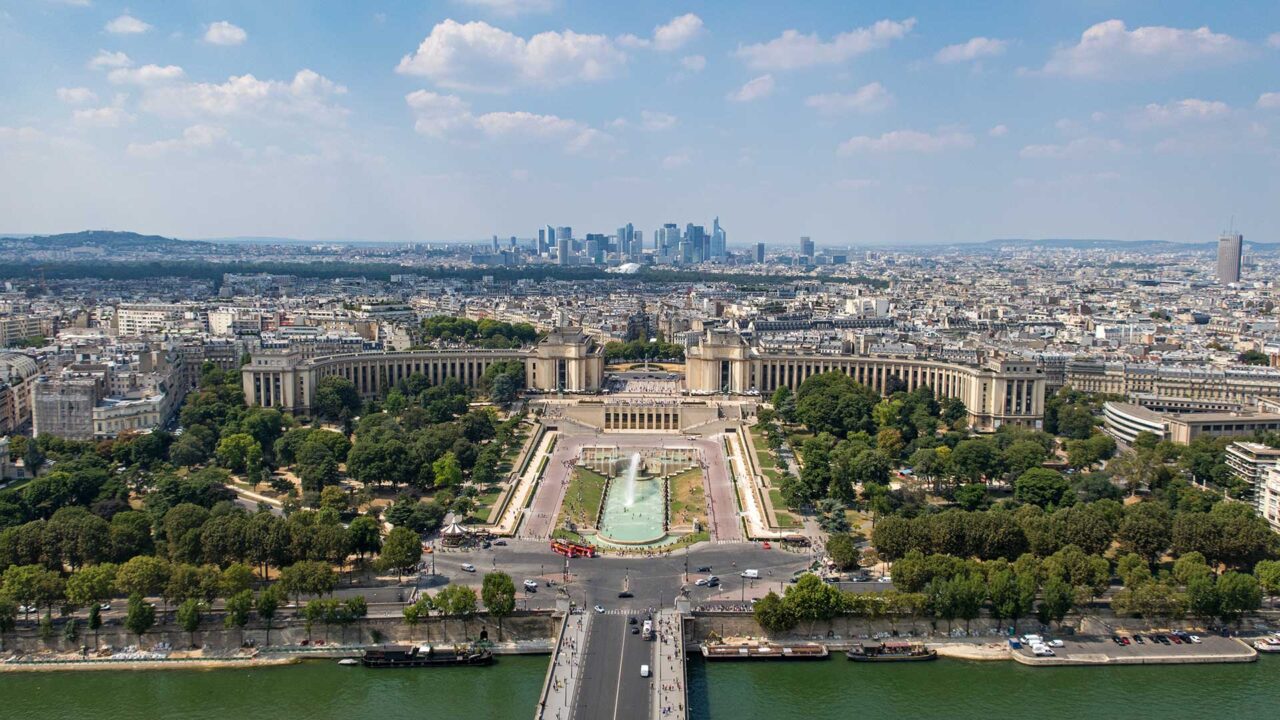
The Jardins du Trocadéro also connect to the Place du Trocadéro. A large square with many restaurants and bistros. The roundabout expands into six avenues, and via the Avenue Kléber, you can even reach the Place Charles-de-Gaulle with the Arc de Triomphe directly. The Place du Trocadéro is an important transport hub where you can find metro stations and buses, making it convenient to reach the Eiffel Tower.
15. Statue of Liberty
Actually, there are even five Statue of Liberty replicas in Paris, but here we’re referring to the nearly 12-meter-tall copy on the Île aux Cygnes Dam, jutting into the Seine River. By the way, it faces towards the Statue of Liberty in New York and was gifted to the city by American residents of Paris.
You can reach the Statue of Liberty by following the Seine River westward from the Eiffel Tower for about 10 minutes. It’s a lovely walk and a sight of Paris with usually fewer visitors.

Moreover, other Statue of Liberty replicas can be found at Jardin du Luxembourg, Musée d’Orsay, on a barge near the Eiffel Tower, and at Musée des Arts et Métiers. In the latter, the Statue of Liberty even served as the model for the American version.
16. Pont de Bir-Hakeim
Just before the Statue of Liberty on the Seine, you automatically cross a bridge, the Pont de Bir-Hakeim, formerly known as the Pont de Passy. At the northern end of the artificially created island Île aux Cygnes, the bridge offers a view of the Eiffel Tower and makes the hearts of movie fans beat faster.
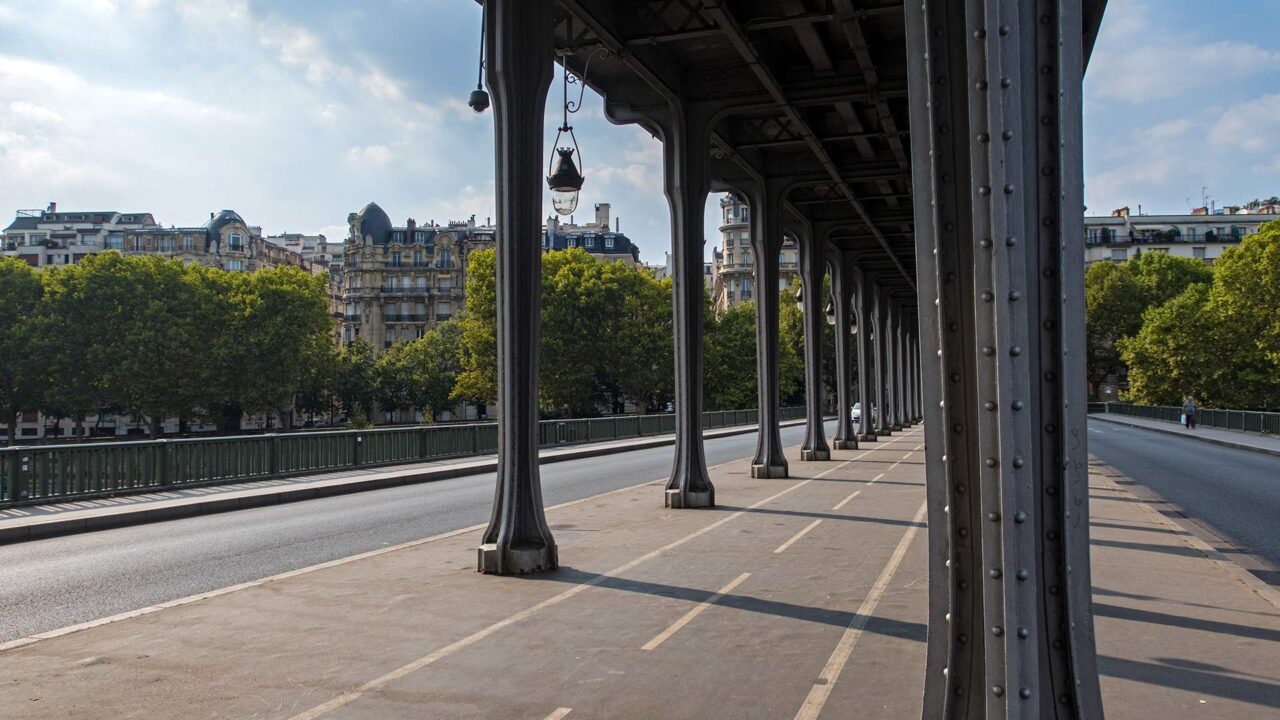
The bridge, opened due to the 1878 World Exhibition, plays a small role in the Hollywood blockbuster Inception. Originally, the bridge looked different, as the viaduct for the elevated railway was only built in 1906, giving it its present form. A quick stopover is worthwhile if you’re interested in seeing the Statue of Liberty or film sets.
17. Sacré-Coeur
The Basilica of Sacré-Coeur stands on a hill in the district of Montmartre. The church, built in the 19th century, is also one of the most visited sights in Paris. Especially in the afternoon, many people gather here right in front of the Sacré-Coeur or in the park to enjoy the view over Paris and the sunset.

During a stroll through Montmartre, you can reach the Sacré-Coeur via the Place du Tertre, through more than 200 steps through the park in front of it, or you can use the Funiculaire de Montmartre, a funicular railway for which you need a metro ticket.
If you want to admire the interior of the Basilica of Sacré-Coeur, you can do so for free. However, if you’d like to learn more about the church, then one of the popular tours with a guide is just the right thing.
18. Moulin Rouge
Even though the Moulin Rouge is technically a cabaret, it’s still one of the sights of Paris, as most visitors are familiar with the red mill. Also situated in the Montmartre district, you can visit the Moulin Rouge every evening.

If you only want to see it from the outside, you can do so during a stroll along the Boulevard de Clichy. However, if you wish to visit the Moulin Rouge, then consider attending one of the two cabaret shows in the evening. There are various ticket options available, including dinner or simply attending the show, which you should reserve in advance.
19. Galeries Lafayette
The Galeries Lafayette is a French department store chain that you can find in many cities across Europe, such as Berlin. However, the original one, which opened in 1884, is located in Paris on Boulevard Haussmann and now spans three buildings. Inside, you’ll find many famous luxury brands. But even if you don’t want to go shopping, a visit is worthwhile as the Art Nouveau interior looks fantastic.
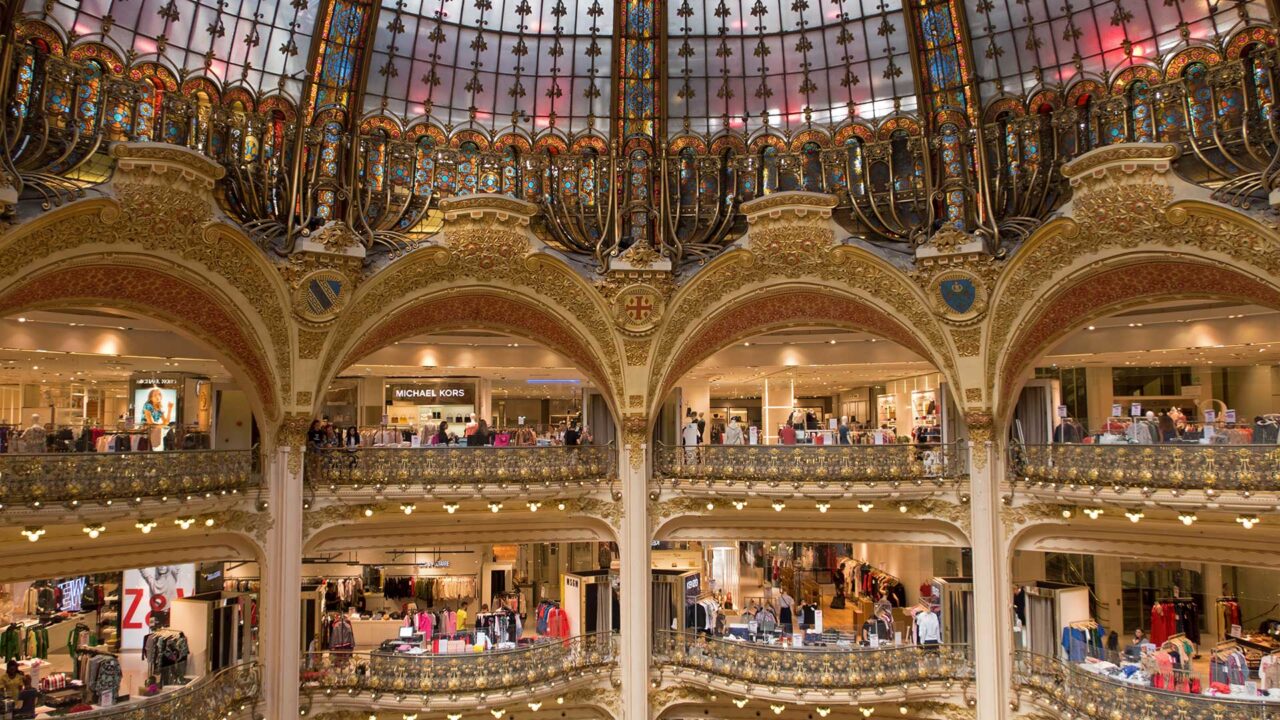
One highlight is the rooftop terrace of Galeries Lafayette on the 8th floor. You can visit it for free and enjoy a great view of Paris from there, while also spotting some famous buildings like the Eiffel Tower.
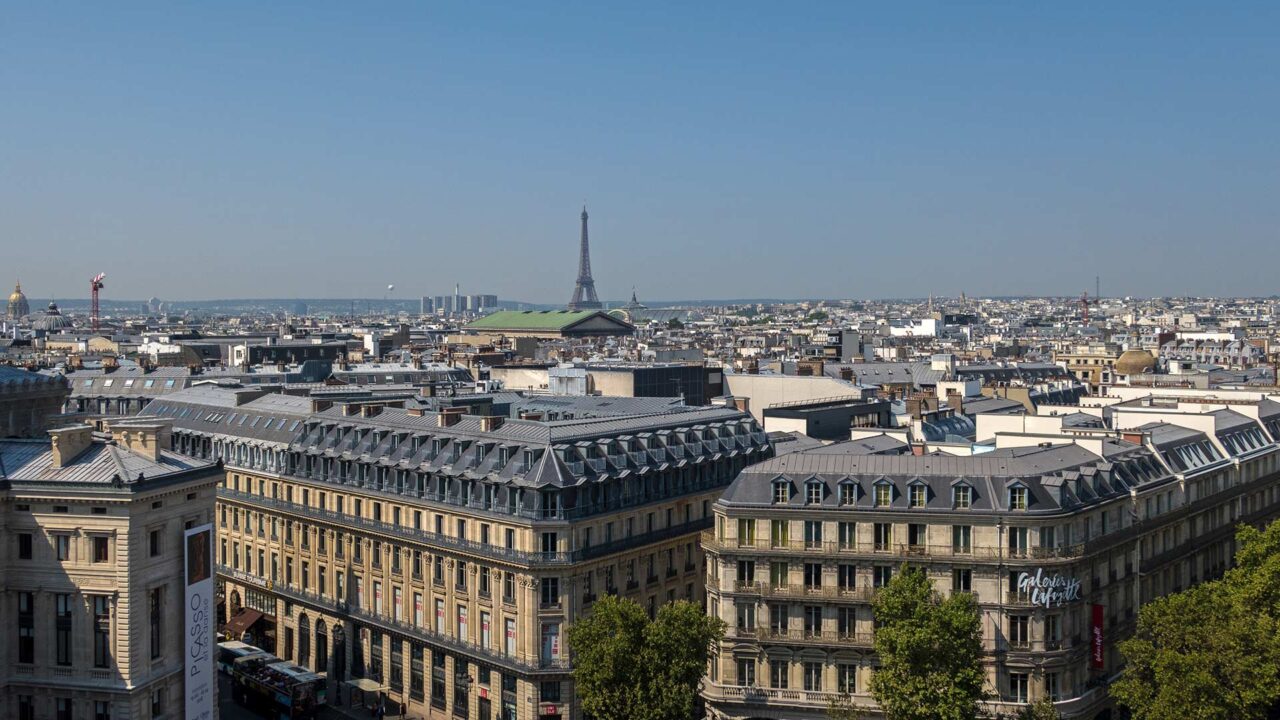
The Galeries Lafayette is open daily from 9.30 AM to 8.30 PM, but on Sundays, it’s open only from 11.00 AM to 8.00 PM. So, you can visit the department store and the rooftop terrace every day and easily incorporate it into a trip to Paris.
20. Opéra Garnier
The opera house of Paris, built in 1875 in the Neo-Baroque style, was the largest in Europe until the construction of the Opéra Bastille in 1989. The Opera Garnier is named after its architect, Charles Garnier, and continues to host classical operas and ballet performances to this day.

The Opéra Garnier is also the original setting for The Phantom of the Opera, as some mysterious events occurred during performances, leading to the belief that an opera ghost haunts the place.
You can explore the sculptures, paintings, and most importantly, the impressive architecture on a guided tour. This is the best way to learn the most about the Opéra Garnier if you’re interested.
Plan your trip to Paris now
More hotel recommendations for Paris:
- Highlight: Le Cinq Codet
- Montmartre: Ibis Paris Montmartre
- Gare de Lyon: citizenM Paris Gare de Lyon
- 16. Arrondissement: Chambellan Morgane
Popular routes to Paris:
Paris: Tours and Tickets
Do you prefer to travel with a guide who knows the area very well? Then we recommend a guided tour with a local. This way you can get to know Paris in a completely different way. GetYourGuide offers a wide selection of exciting tours for Paris.
Tip: With the Paris City Pass, you can visit many museums and attractions for free or at a discounted price. In addition, the price includes travel on the metro, bus, etc., allowing you to move around Paris without additional costs.
Have you been to Paris? What’s the most beautiful landmark in Paris for you? Do you have more Paris sights to share with us? Give us some feedback in the comments.

Tobi
Hi, I'm Tobi, author, passionate travel blogger and founder of this blog. I've been traveling the world a lot since 2013, mostly in Southeast Asia, but sometimes also in Europe. The Thai island of Koh Phangan has become my home base when I'm not traveling. Find out more on our About Us page.